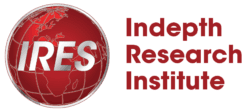Across cities, rural landscapes, industrial zones, and conservation areas, development decisions increasingly determine the environmental future we inherit. Roads, dams, factories, housing projects, mining sites, and agribusiness investments all shape economic growth. At the same time, they carry the potential to quietly accelerate ecological decline. For this reason, Environmental Impact Assessment (EIA) has never been more important.


EIA is more than a regulatory checkbox. Instead, it serves as a structured safeguard, an early warning system that connects science, community realities, and long-term planning. By doing so, it ensures that development meets human needs without eroding the ecosystems that sustain life. (UNEP 2022)
Contents
Understanding EIA: A Tool for Prevention
EIA identifies potential environmental consequences ahead of project implementation. Consequently, it is fundamentally preventive. Rather than addressing pollution, biodiversity loss, or community displacement after they occur, EIA provides a mechanism to confront these challenges early, intelligently, and strategically.
Also Read: Environmental Impact Assessment with ArcGIS
Through a combination of data collection, modelling, scenario analysis, and stakeholder consultation, EIA brings together multiple lenses: environmental science, public health, engineering, social development, and policy. (IAIA)


As a result, the process helps governments and investors answer key questions:
-
What environmental assets may be affected?
-
How risks are likely to emerge over time
-
What alternative project options offer lower impact?
-
What mitigation measures can ensure sustainability?
Ultimately, EIA becomes an essential instrument in anticipating challenges and designing responsible development pathways.
The Role of Mitigation Planning: Turning Risk Into Action
Once EIA identifies potential impacts, the process translates technical insights into practical solutions. This is where mitigation planning becomes crucial, as it bridges the gap between assessment and implementation.


Mitigation planning ensures that:
- Control pollution at the source
- Restore or compensate ecosystems
- Protect and consult communities
- Monitor risks throughout the project lifecycle
Why EIA Matters Today More Than Ever
As pressures from climate change intensify, floods, droughts, heatwaves, and land degradation, projects that ignore environmental dynamics can trigger cascading economic and social consequences. In this context, EIA provides a structured framework that allows institutions to adapt infrastructure, investment, and land-use decisions to emerging realities. (World Bank, 2018)
Moreover, investors, development partners, and regulators worldwide are tightening requirements around environmental and social safeguards. Consequently, regulators now link high-quality EIAs directly to project approval, funding eligibility, and long-term sustainability.
Building the Skills That Strengthen Compliance and Sustainability
With urbanisation accelerating and infrastructure needs growing, organisations require professionals who can interpret data, evaluate risk, engage communities, and design effective mitigation strategies. As a result, strong EIA skills are fundamental to responsible development.


Additionally, teams equipped with sound EIA knowledge contribute to better decision-making, reduced project delays, and improved environmental performance across sectors.
Did you know?
More than 120 countries now require EIAs for major development projects to ensure environmental and social sustainability.
Take the Next Step in Mastering Environmental Assessment
At Indepth Research Institute (IRES), our Environmental Impact Assessment (EIA) and Mitigation Planning Course is designed to strengthen technical capacity and practical application in real-world development contexts that equip professionals with essential competencies.
Learn more and register here: https://forms.gle/UFyRxr9pPNi71N3Y7
I’m a storyteller at heart and a strategist by trade. With over 3 years of experience in digital marketing, content creation, and brand communications, I’ve worked with leading institutions and dynamic brands to shape narratives that resonate. From educational spaces and corporate training to real estate and sustainability, I’ve crafted content that not only speaks but delivers. This blog is my creative space, a reflection of everything I’ve learned (and keep learning) about writing with purpose, building trust, and turning ideas into impact.









Comment here